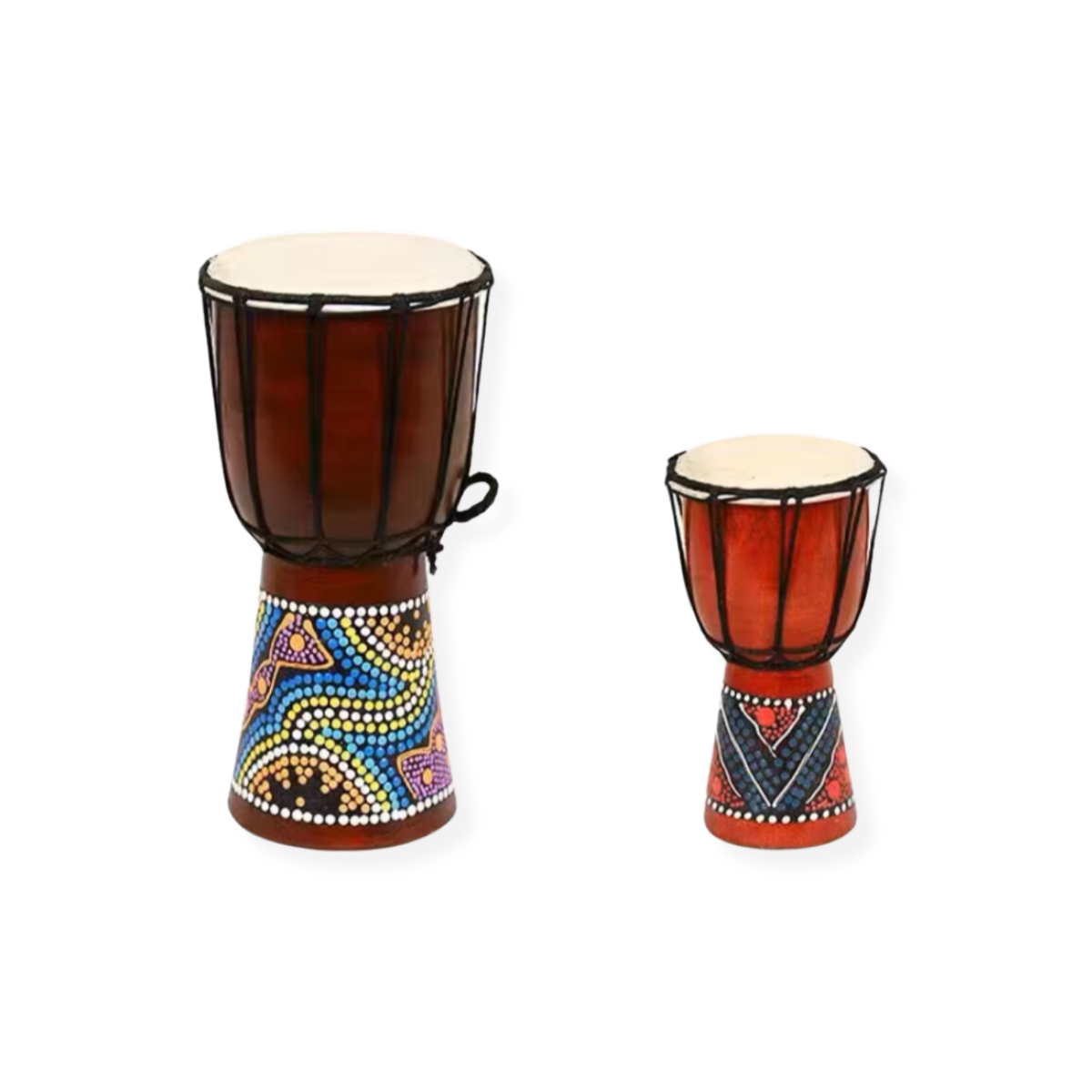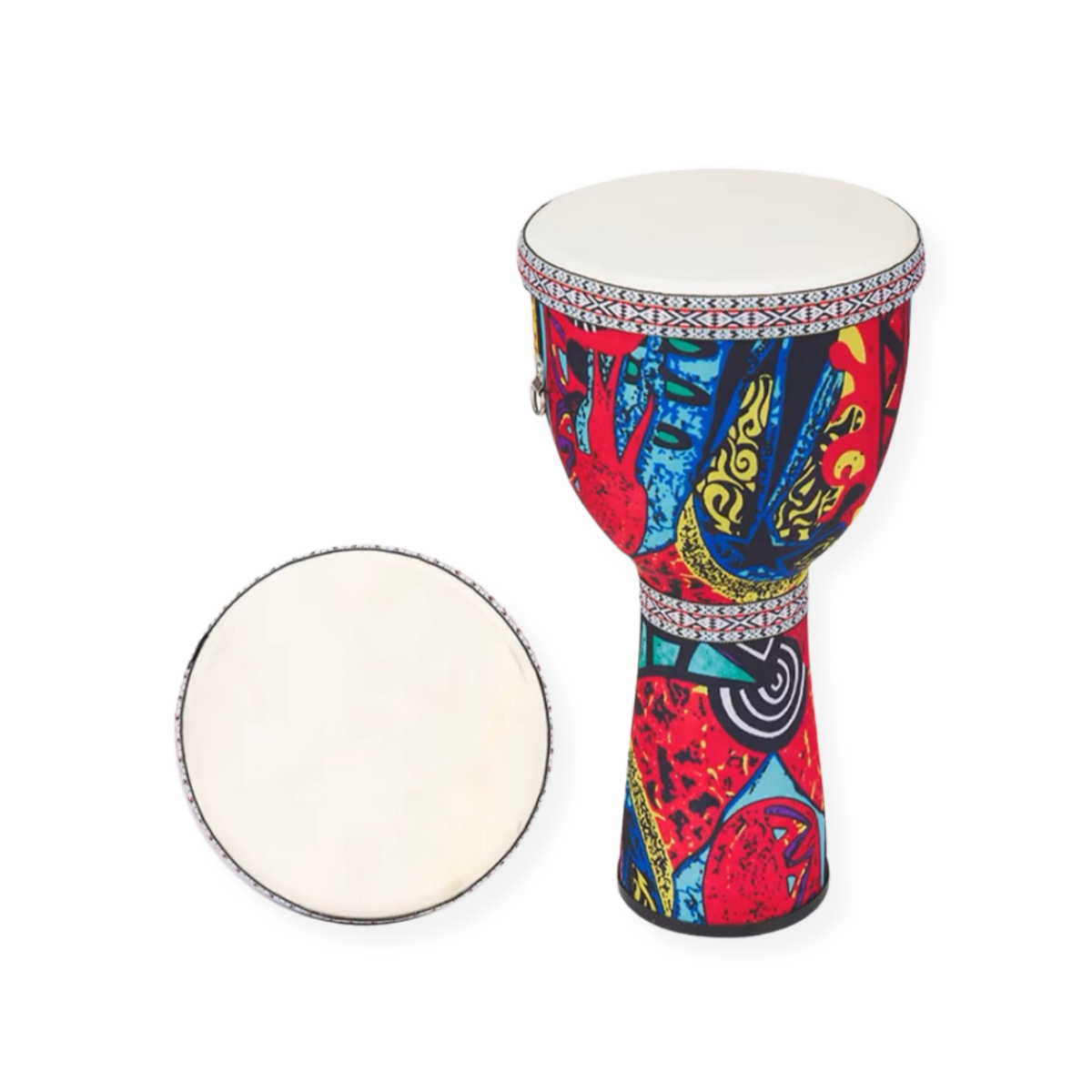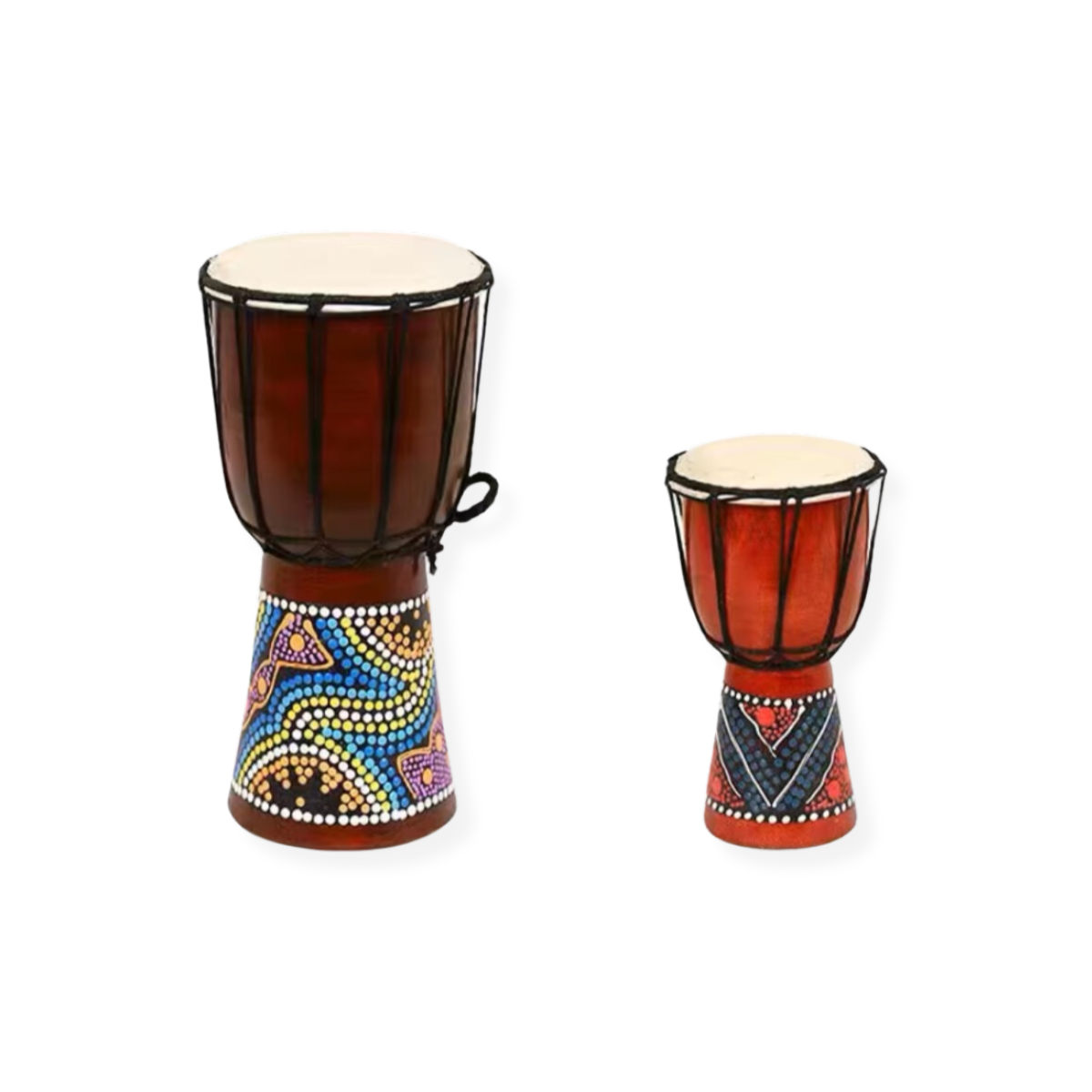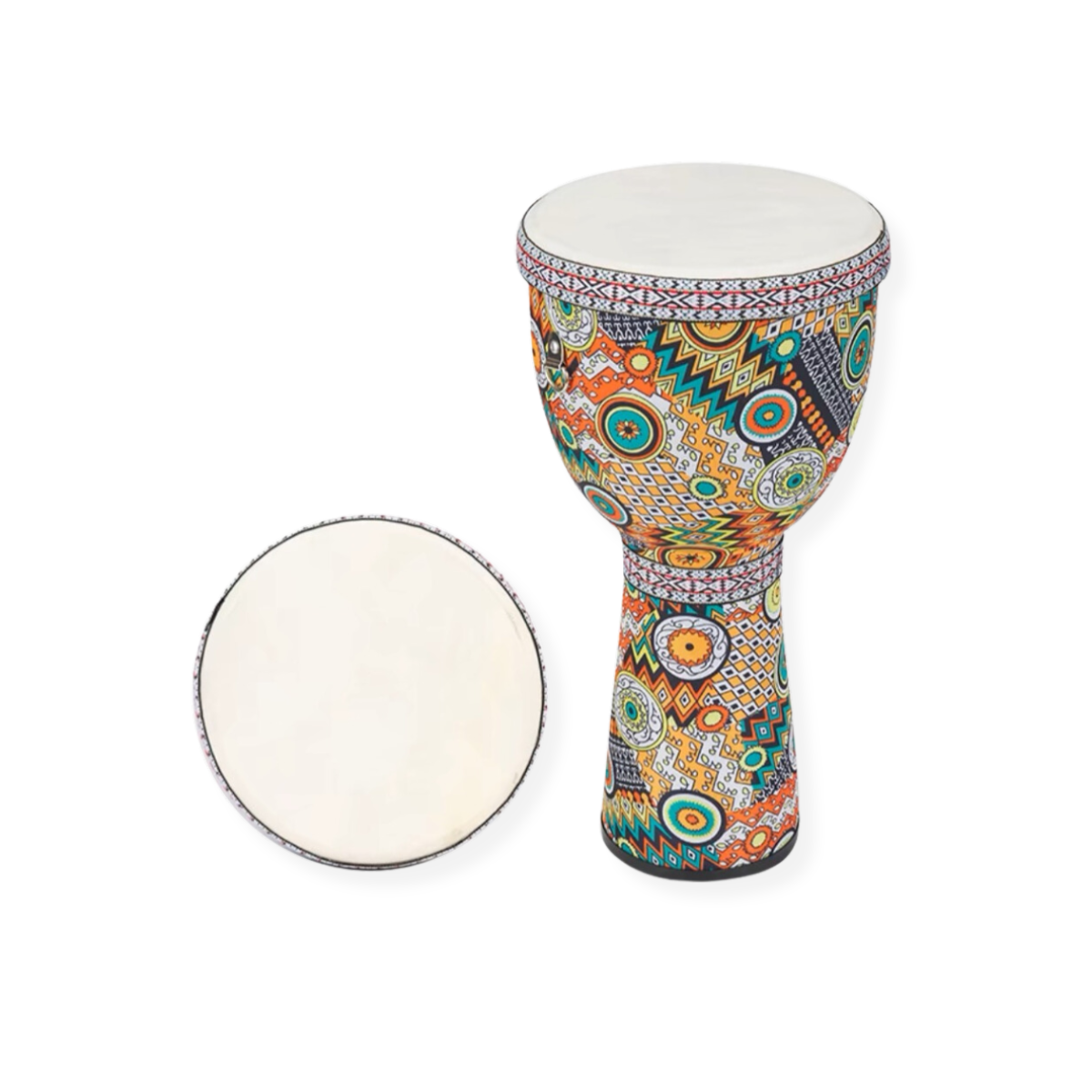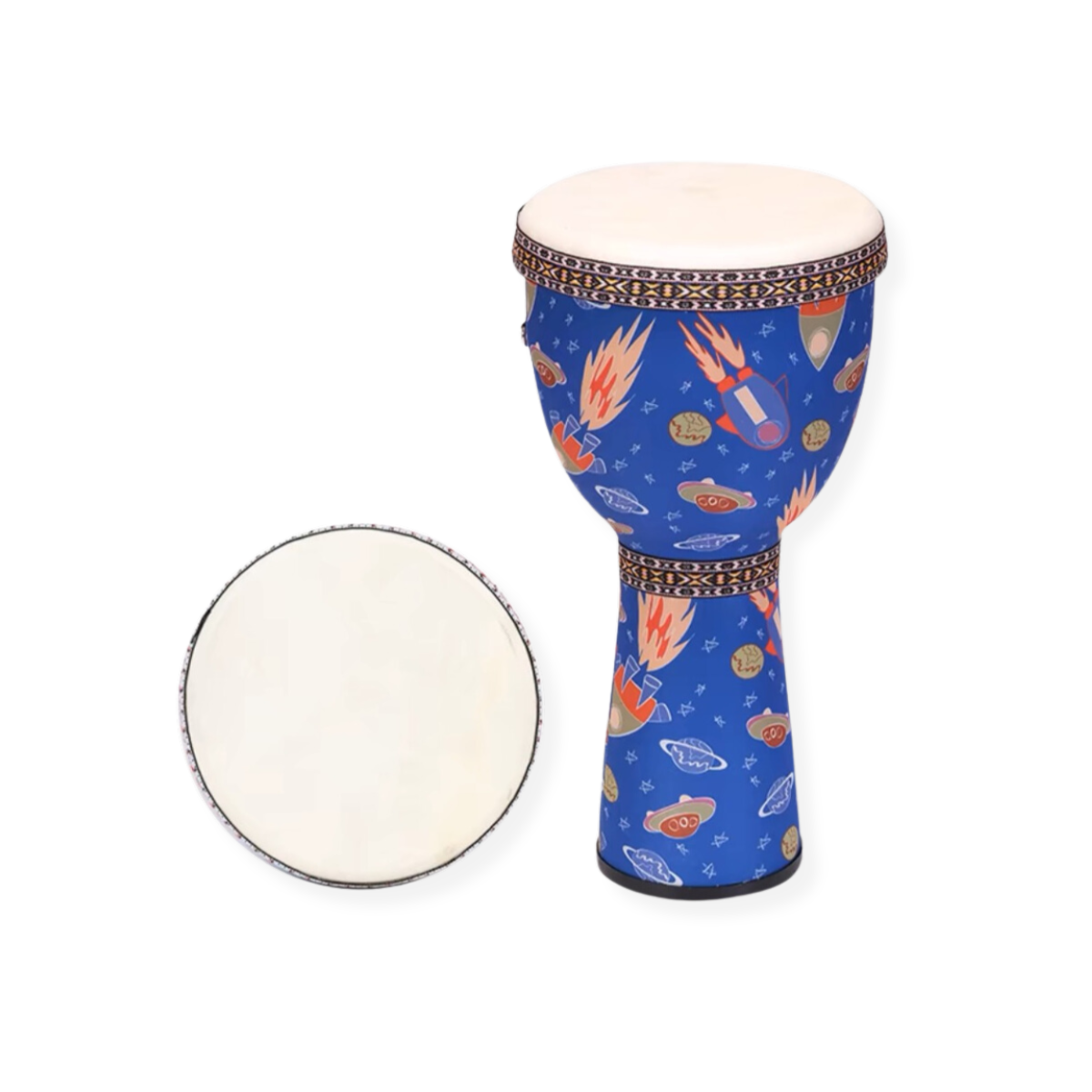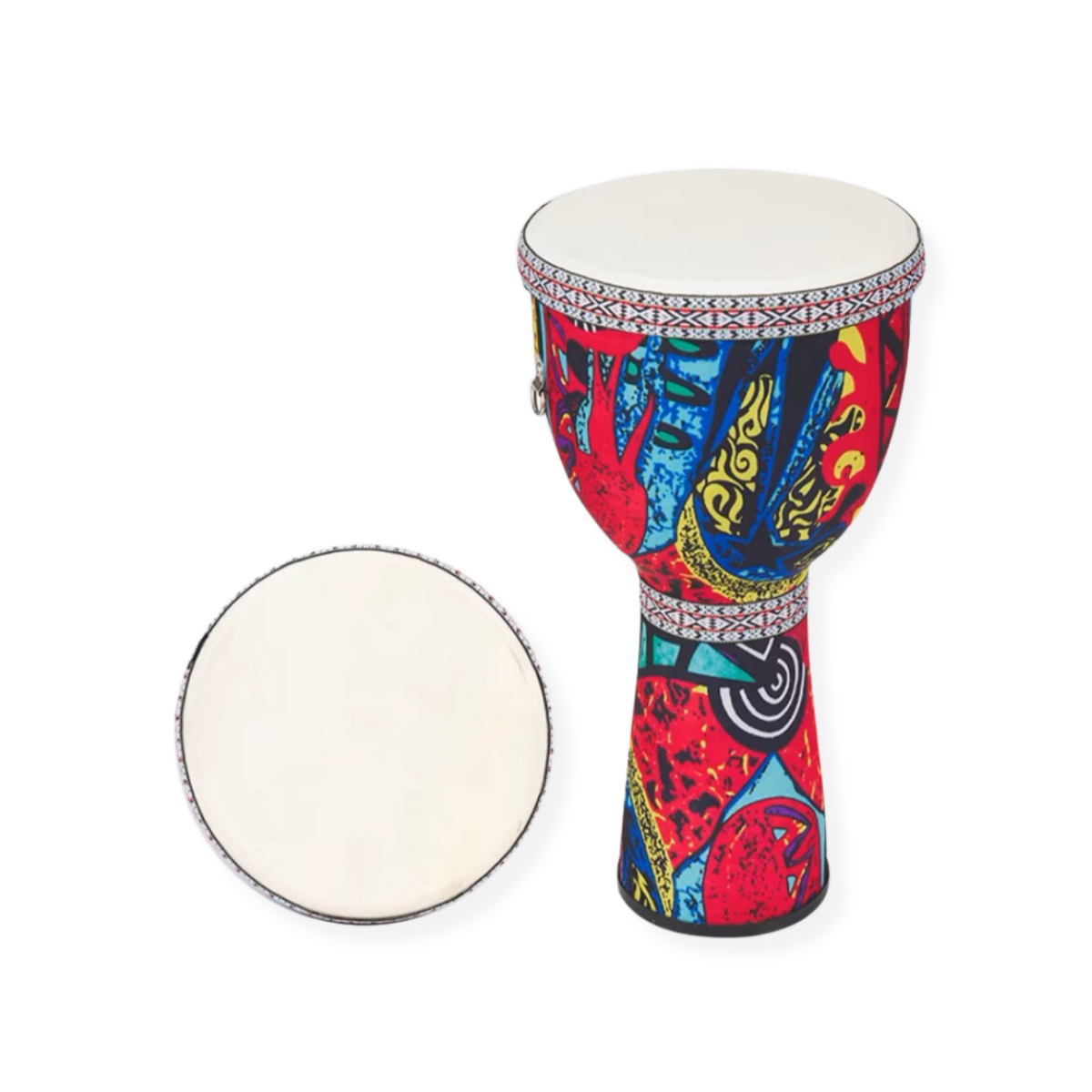Flight Music for Kids
African drum
African drum
Couldn't load pickup availability
African drum, reliable supplier
Flight Music has been supplying musical instruments to government departments since 2010.
We also provide a reliable supply of African drums to various social welfare organizations and primary and secondary schools.

The African drum is a percussion instrument with a long history and profound cultural significance, and is widely found in various regions of the African continent. The African drum is not only a musical instrument, it also carries African culture, history and people's daily life. African drums in different regions have different shapes, timbres and uses. They play an important role in music performances, social ceremonies, religious celebrations, wars and communications.
Types and structures of African drums
There are many different types of African drums, each with its own unique structure and purpose. One of the most famous African drums is the Djembe, which comes from West Africa and is particularly popular in countries such as Mali, Guinea and Senegal. In addition, there are other famous African drums such as Dundun, Talking Drum and Bata.
1. Djembe
The djimbe drum is one of the most well-known drums in Africa and is usually made of hollow wood in the shape of a funnel. The drumhead is usually made of goat skin and is fastened to the drum body by ropes or steel wires. The djembe drum has a very wide range of tones, from deep bass to crisp high notes, and the player can produce different timbres by striking it in different positions of the palm or fingers. The jimbei drum is commonly used in social occasions, celebrations and religious activities, and is often played with other drums to create a rich rhythmic layering.
2. Dundun
The duduun is a large cylindrical drum made of wood with a drumhead covered with cow or goat hide. It usually comes in pairs, one large and one small, and the sound is made by striking with a wooden stick. The duduun drum has a deep, rich sound and often serves as the basis of the rhythm. It plays an important role in traditional African music, particularly as bass support in large drum groups.
3. Talking Drum
The tama, also known as the "talking drum," is a percussion instrument that can imitate the human voice. Its drum body is hourglass-shaped, and the drumheads at both ends are connected by ropes. The player can change the tension of the drumhead by squeezing the ropes, thereby changing the pitch, which enables the tama drum to make a sound similar to speaking. The tama drum is very common in West African music, especially in traditional ceremonies and celebrations, where it is often used to convey messages or tell stories.
4. Bata
The bata drum originally comes from the Yoruba people of Nigeria and is an important instrument in religious ceremonies. It has three drums of different sizes, each playing a different part. The playing technique of the bata drum is very complex and is often combined with dance and singing and used in sacrifices and other religious activities.
Musical characteristics of African drums
The musical characteristics of African drums are mainly reflected in their diverse rhythms and timbres. African music focuses on the diversity and complexity of rhythm, and drums, as percussion instruments, have become the core of African music. Different African drums have different timbres and ranges, which gives them a rich sense of layering in musical expression.
1. Multi-layered rhythm
African drumming is usually performed collectively, with drummers playing together to form a polyphonic rhythmic structure. Each drummer is responsible for a different layer of rhythms, which interweave to create a complex and powerful musical effect. This multi-layered rhythm is usually based on a main rhythm, while other drummers improvise on top of the main rhythm.
2. Diverse tones
Different djembe drums have different tones, depending on the size and shape of the drum and the material of the drumhead used. For example, the djembe drum can produce a low "Bass" sound as well as crisp "Tone" and "Slap" sounds. The changes between these timbres allow the player to express rich musical emotions. The tama drum can imitate the human voice by changing its tension, which makes it uniquely suited for telling a musical story or conveying a message.
The cultural and social significance of African drums
The African drum is not only a musical instrument, it plays an important role in the social and cultural life of Africa. Drums are often closely associated with religion, rituals, dance and social activities in Africa.
1. Religion and rituals
In many parts of Africa, drums are viewed as a tool for communicating with spirits. In religious ceremonies, the sound of drums is believed to awaken the spirits of ancestors or convey the will of the gods. For example, the Yoruba bata drum is often used in sacrificial ceremonies to express respect for the gods through complex rhythms.
2. Socializing and Celebration
In daily life in Africa, drums often appear in various social occasions and celebrations. At important moments such as weddings, funerals, and harvest festivals, the sound of drums always accompanies people's dancing and singing. The sound of the drums has a unifying power, connecting people from across the community to share joy and sorrow. Social activities in Africa are usually open and collective, and drums become an important background music for these collective activities.
3. Communication tools
In the past, drums were also used as a communication tool. In some parts of Africa, drummers use specific rhythms to convey messages, especially over large territories. The tama drum was often used to convey messages due to its ability to mimic speech, which led to it being called the "talking drum".
The Application of African Drums in Modern Music
With the process of globalization, African drums have gradually stepped onto the world stage and become an indispensable part of modern music. Many Western musicians and composers have incorporated the rhythms and timbres of African drums into their works, creating musical styles that blend different cultures.
1. Pop and World Music
African drums are widely used in modern pop music and world music. For example, the djembe drum is often used in a variety of musical styles, from jazz to pop to electronic music. Whether as a main instrument or background rhythm, it can add a unique rhythmic feel to a musical work.
2. Music Education
African drums are also an important tool in music education, especially in children's music education. Because it is easy to learn and can stimulate children's perception of rhythm, more and more schools and music institutions have incorporated African drums into their curriculum to help students understand and master the basic rhythm concepts of music.
Share
